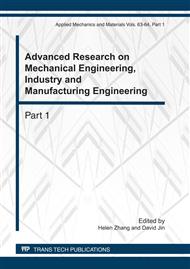p.637
p.643
p.647
p.651
p.655
p.659
p.664
p.668
p.673
The Study on Crashworthiness Performance of Thin-Walled Structures and the Effect of Welding Performance on it
Abstract:
Explicit finite element method is adopted to simulate the crashworthiness performance of four types of typical thin—walled structures used in vehicle by software LS-DYNA. The structures with the same material、area and length are crash by a rigid body with 40km/h in10ms, The crash processes and crashworthiness characters are analyzed by a series crash parameters: deformation energy with unit displacement, impact force and deceleration to look for the optimal shape with crashworthiness. With comparing, the double caps section has ascendant performance than the others. The simulating methods of welded-joints are discussed to analysis their effects on crashworthiness simulation.
Info:
Periodical:
Pages:
655-658
Citation:
Online since:
June 2011
Authors:
Keywords:
Price:
Сopyright:
© 2011 Trans Tech Publications Ltd. All Rights Reserved
Share:
Citation:


